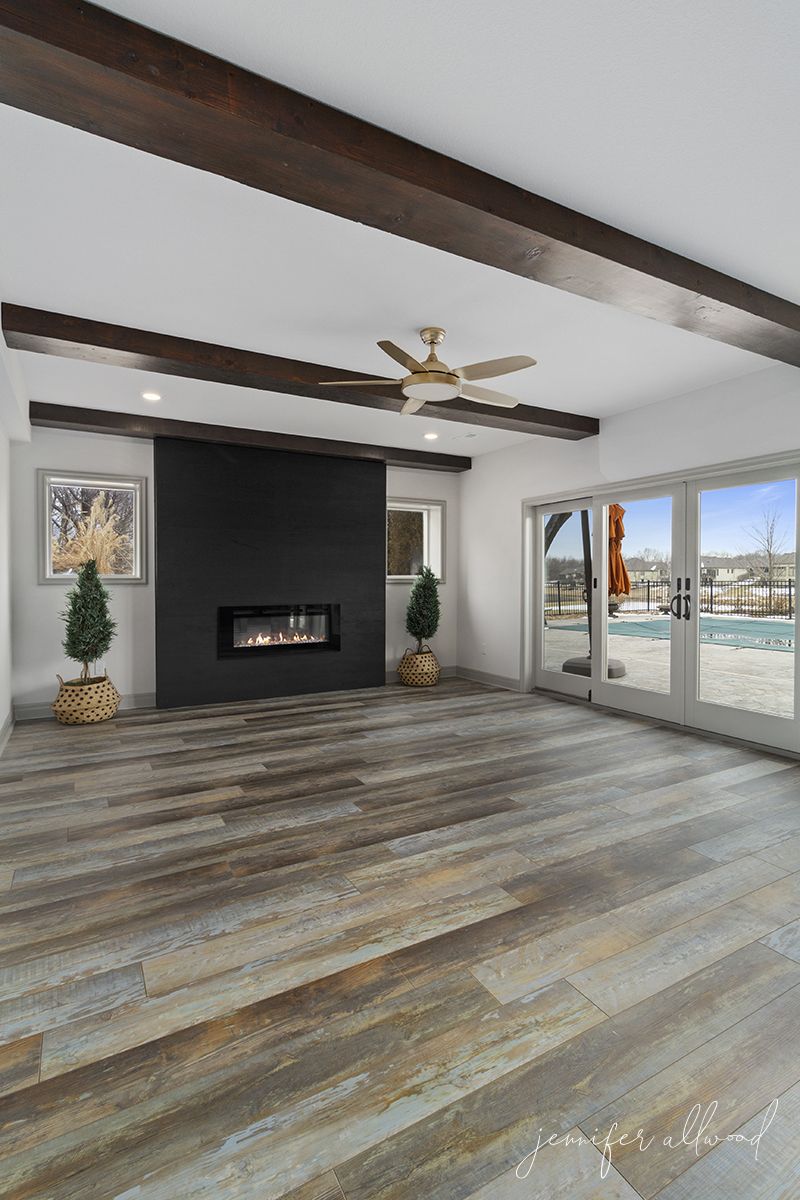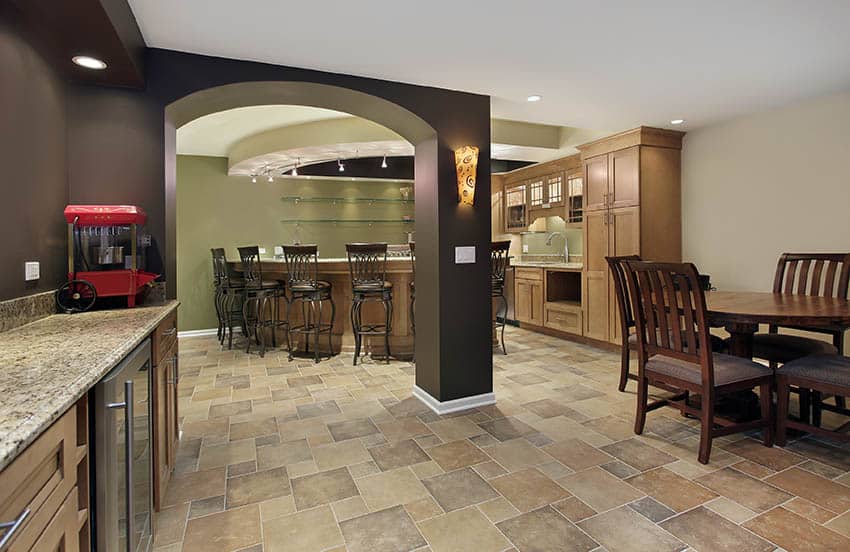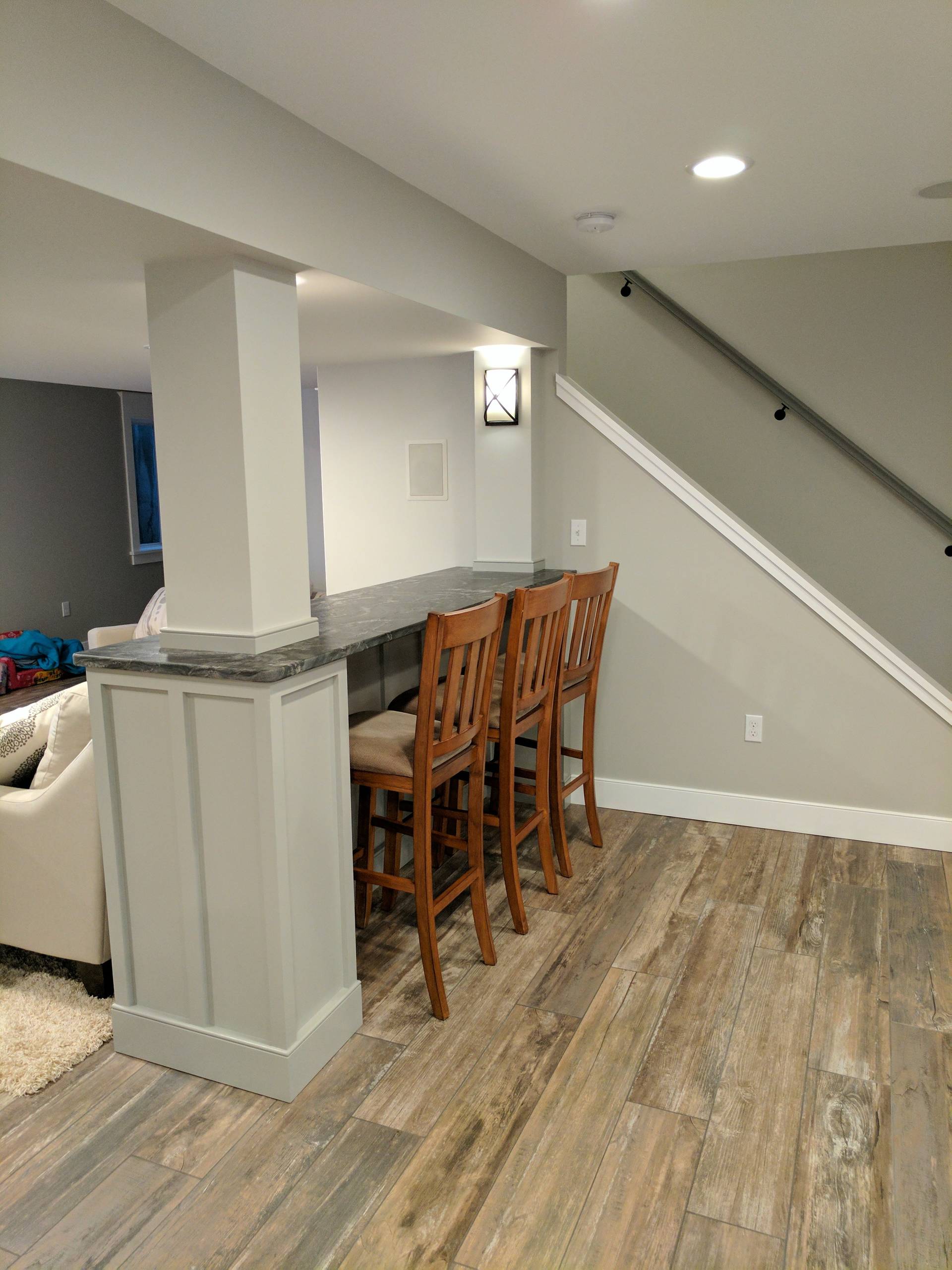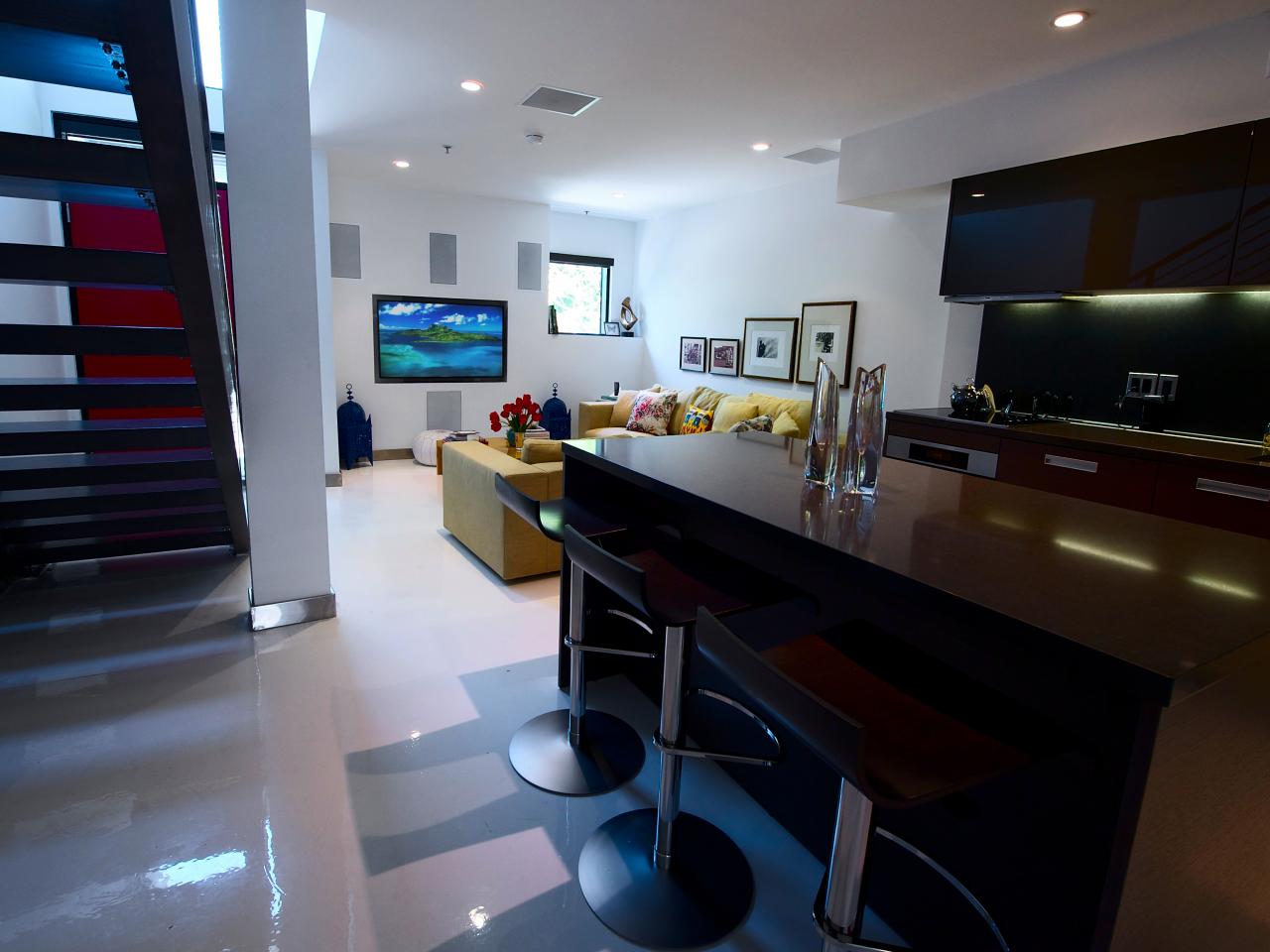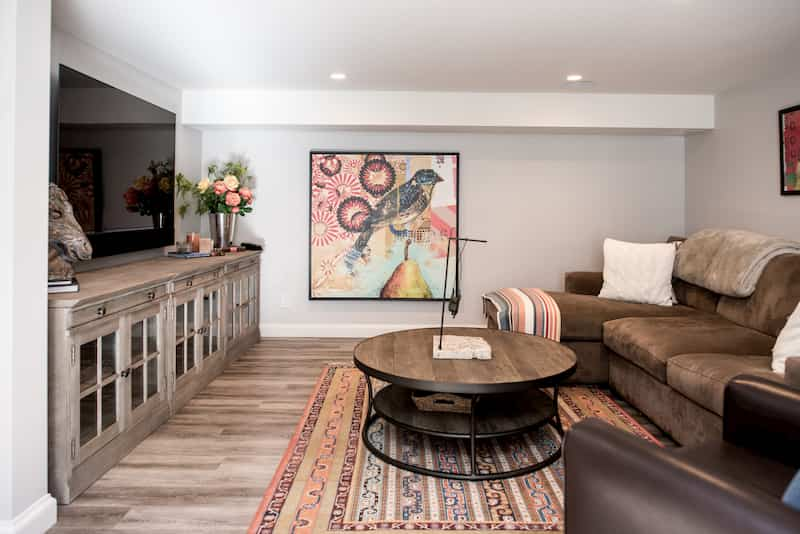As I stand on the threshold of my basement, I can’t help but feel a sense of untapped potential lingering in the air. Basements, often relegated to storage or forgotten corners of our homes, have a world of possibilities waiting to be discovered. This is where my journey begins – into the realm of basement floor tile ideas. In this comprehensive guide, join me as we unveil the captivating world of design options that can transform this subterranean space from forgotten to fabulous.
Importance of Basement Flooring
The basement, with its unique moisture challenges and limited natural light, necessitates careful consideration regarding flooring. This foundation, quite literally, sets the stage for the functionality and aesthetic of the space. My eagerness to reimagine my basement stems from the realization that the right floor tiles can elevate the space visually and tackle the practical demands of this environment head-on.
Tile Types for Basement Floors
My journey into basement floor tile ideas led me to explore an array of tile types, each with its own set of advantages. Porcelain tiles stood out for their remarkable durability and resistance to moisture – a critical factor in basements. The diverse range of colors, patterns, and sizes they offer gave me the creative freedom to craft a space that resonates with my unique style. On the other hand, ceramic tiles beckoned with their versatility in design, enabling me to infuse character into my basement while keeping an eye on potential moisture-prone areas. And then, luxury vinyl tiles (LVT) emerged as a revelation, replicating the allure of wood and stone while providing the resilience needed for basement foot traffic and dampness.
Aesthetic Basement Tile Ideas
My heart began to race when I dived into the realm of aesthetic basement tile ideas. The allure of natural stone, from the timeless elegance of slate to the earthy charm of travertine and the opulence of marble, spoke to my desire for a rustic yet sophisticated ambiance. However, the notion of wood-look tiles held its magic, offering the warmth of wood without its vulnerabilities to moisture. The ability to select from various styles, from distressed to modern, ignited my imagination. But the true spark of creativity ignited when I discovered geometric patterns, injecting an infusion of dynamic visual interest that was both contemporary and nostalgic.
Practical Considerations for Basement Tile Selection
While aesthetics are pivotal, practicality cannot be overlooked, especially in the basement environment. Moisture resistance was a critical criterion, urging me to choose tiles with low absorption rates that could withstand the dampness that often lingers. Maintenance and cleaning, too, emerged as priorities. The ease of cleaning surfaces was essential, ensuring that the space remains as hassle-free as it is stylish. And then came the consideration of insulation and comfort – a reminder that basement floors need not only to be functional but inviting too. The prospect of incorporating underfloor heating options to create a cozy retreat resonated deeply with my vision.
Creating a Cozy and Functional Basement
As my imagination soared, I envisioned various facets of a transformed basement – from family or play areas adorned with soft and inviting carpet tiles to exercise zones with resilient rubber tiles for those energetic workouts. The thought of a home theater area, complete with acoustic considerations and carefully chosen tiles, painted a picture of entertainment excellence. However, my heart was drawn to the allure of contemporary elegance, with large-format tiles offering a seamless, open look that maximized space while maintaining a minimalist vibe.

DIY vs. Professional Installation
As I stood amidst my newfound design aspirations, the question of implementation echoed in the air. The allure of a DIY venture tugged at my creative spirit, promising a hands-on involvement in every facet of my basement’s transformation. Yet, the prospect of professional installation held its allure, with the promise of expertise and seamless execution. As I navigated this pivotal decision, I found that the choice between DIY and professional installation wasn’t just about the outcome – it was about understanding my limitations, seeking expert guidance, and ultimately ensuring a basement that seamlessly harmonized with my vision.
Assessing Personal Skill and Comfort Levels: The first step in this decision-making process was introspection. I had to assess my skill level and comfort with DIY projects honestly. While I had taken on a variety of home improvement endeavors, I needed to understand if the complexities of basement floor installation were within my capabilities. Factors like surface preparation, tile layout, and ensuring proper adhesion all required expertise that I wasn’t entirely sure I possessed. Recognizing these limitations was crucial, as it set the stage for a realistic evaluation of the path forward.
The Intricacies of Basement Floor Preparation: The basement environment presented its unique challenges, particularly when it came to floor preparation. Moisture issues, potential uneven surfaces, and the need for proper insulation all added complexity to the project. These aspects required technical knowledge that went beyond basic DIY skills. The more I delved into the intricacies of basement floor preparation, the more I realized that professional installers brought a wealth of experience that could make all the difference in achieving a flawless result.
Balancing DIY Ambitions with Expertise: My enthusiasm for DIY projects was undeniable, and I yearned for that sense of accomplishment from doing it myself. However, as I weighed the complexity of basement floor tiling against my ambitions, I began to appreciate the value of expert guidance. Professional installers not only possessed the technical know-how but also understood the nuances of basement environments. They could offer solutions to potential challenges and ensure that the final result was visually pleasing and structurally sound.
Embracing the Best of Both Worlds: As I navigated the crossroads of DIY and professional installation, I realized there was room for a hybrid approach that harmonized both worlds. While I might not have the expertise for the entire installation process, I could still play an active role in the design decisions. Collaborating with professionals allowed me to convey my vision, preferences, and design aspirations. This synergy of creativity and expertise promised a basement that was an extension of my style and a testament to professional craftsmanship.
Understanding the Investment: The decision to opt for professional installation also required understanding the investment involved. While DIY projects might seem cost-effective, the potential for mistakes and the need for specialized tools could quickly escalate expenses. On the other hand, professional installation ensured a streamlined process, quality materials, and a finish that met industry standards. It was about the immediate cost and the long-term value of a well-executed installation.
15 DIY Basement Flooring Ideas – Affordable DIY Flooring Options
9 Basement Flooring Ideas for Your Home – Bob Vila
Basement Flooring Ideas (Best Design Options) – Designing Idea
75 Porcelain Tile Basement Ideas Youu0027ll Love – June, 2022 Houzz
Floor Tiles for Basements HGTV
Cork Flooring In Basements HGTV
5 of the Most Durable Basement Flooring Options
Go All Out in Your Basement Design With Luxury Vinyl Tile
Basement Flooring 101 – Bob Vila
Related Posts:
- Best Flooring For Basements With Moisture
- How To Waterproof Basement Concrete Floor
- Concrete Basement Floor Finishing Ideas
- Acid Wash Concrete Basement Floor
- Basement Underlayment For Laminate Flooring
- Best Basement Flooring Over Concrete
- Hardwood Flooring Over Concrete Basement
- Floor Edging For Dry Basements
- Installing Carpet Over Concrete Basement Floor
- Wet Basement Flooring Ideas

